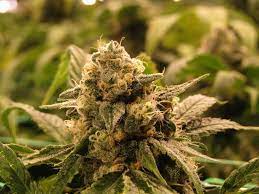Introduction
With the increasing legalization of cannabis in numerous regions, many enthusiasts are considering the option of cultivating their own plants. Growing cannabis at home not only allows you to control the quality but also offers invaluable insight into the cultivation process.
Understanding Legalities
Before initiating the cultivation process, it is crucial to understand the legal guidelines and restrictions in your area. These laws vary by location and can have severe consequences if not adhered to. Always consult with local laws to ensure compliance.

Choosing the Right Seeds
The foundation of your growing success starts with selecting high-quality cannabis seeds. There are primarily three categories of seeds: feminized, autoflowering, and regular seeds. Feminized seeds are engineered to produce only female plants, which are considered to produce the most valuable resinous buds. Autoflowering seeds are great for beginners as they transition to the flowering stage on their own. Regular seeds can produce both male and female plants, making them ideal for breeding purposes.
Setting Up Your Grow Space
Indoor vs. Outdoor
Your choice between growing indoors or outdoors will significantly impact your growing process. Indoor growing offers greater control over environmental factors but can be more expensive initially due to equipment costs. Outdoor growing, on the other hand, makes use of natural sunlight and is generally easier on your wallet.
Essential Equipment
- Grow Lights: High-intensity discharge (HID), light-emitting diode (LED), or compact fluorescent lights (CFL).
- Grow Tent: A contained environment that helps control humidity, temperature, and light cycles.
- Ventilation System: Essential for maintaining good airflow and temperature control.
- Soil or Growing Medium: Organic soil or soilless hydroponic mediums.
- Temperature and Humidity Control: Thermometers and hygrometers.
Cannabis Growth Stages
Germination
This is the initial stage where the seed absorbs water and begins to sprout. To germinate correctly, place the seeds in a damp paper towel and keep them in a dark place until the taproot emerges.
Seedling
Once the seed has germinated, plant it into your grow medium. During this stage, the plant will develop its first set of leaves and will require ample light and water but not too much to prevent root rot.
Vegetative
Your plant will focus on growing leaves and stems during the vegetative stage. This stage is crucial for establishing a strong structure, so provide plenty of light (18-24 hours daily), nutrients, and water.
Flowering
To initiate the flowering stage, adjust the lighting to a 12-hour light, 12-hour dark schedule. During this stage, you will notice the formation of buds, and it is vital to monitor for signs of pests and diseases closely. Maintain an optimized environment with proper nutrients and consistent watering.

Nurturing and Maintenance
Nutrient Management
Cannabis plants require specific nutrients to thrive. During the vegetative stage, higher amounts of nitrogen are necessary, while during the flowering stage, phosphorus and potassium are more essential. Always follow nutrition guidelines based on the growth stage and monitor plants regularly to prevent deficiencies.
Pest and Disease Control
Preventing pests such as spider mites and mold is key for a healthy plant. Regularly inspect your plants and use organic pest control methods to avoid harmful chemicals. Neem oil and insecticidal soaps can be effective solutions.
Training Techniques
Training techniques like topping, low-stress training (LST), and super cropping can help maximize your yield and improve bud quality. These methods involve manipulating the plant structure to produce more bud sites and ensure even light distribution.
Harvesting
Timing is critical when harvesting cannabis. Use a magnifying glass to inspect the trichomes (tiny resin glands) on your buds. When most trichomes have a milky appearance, it's the ideal time to harvest. Avoid harvesting too early or too late as it can affect potency and flavor.
Drying and Curing
After cutting down your plants, hang the branches upside down in a cool, dark, and well-ventilated space to dry for 7-10 days. Once dried, trim your buds and place them in airtight glass jars for curing. Open the jars daily for the first week to remove excess moisture and then bi-weekly for a month to enhance the flavor and smoothness of the smoke.
Storing Your Cannabis
Proper storage is essential to maintain the potency and quality of your final product. Store your cannabis in a cool, dark place in airtight containers. Avoid plastic bags or containers, as they can affect the quality over time.

Frequently Asked Questions
Is it legal to grow cannabis at home?
The legality of growing cannabis at home varies by region. Always check local laws and regulations before starting your cultivation journey.
How long does it take to grow cannabis?
The total growth cycle from germination to harvest typically takes 3-7 months, depending on the strain and growing conditions.
What are the best growing mediums for cannabis?
Common growing mediums include organic soil, coco coir, and hydroponic systems. Each medium has its own benefits and drawbacks, so choose based on your needs and experience level.
Can I grow cannabis without professional equipment?
While professional equipment can enhance your growing experience, it is possible to grow cannabis with more basic setups. However, the quality and quantity might be affected without proper environmental controls.
How do I identify the sex of my cannabis plants?
Male plants produce small pollen sacs, while female plants develop pistils (hair-like structures). Identifying and removing male plants early is important to prevent pollination of your female plants.
For more detailed guidance and tips on growing cannabis, consider visiting trusted sources like Leafly and Royal Queen Seeds.

